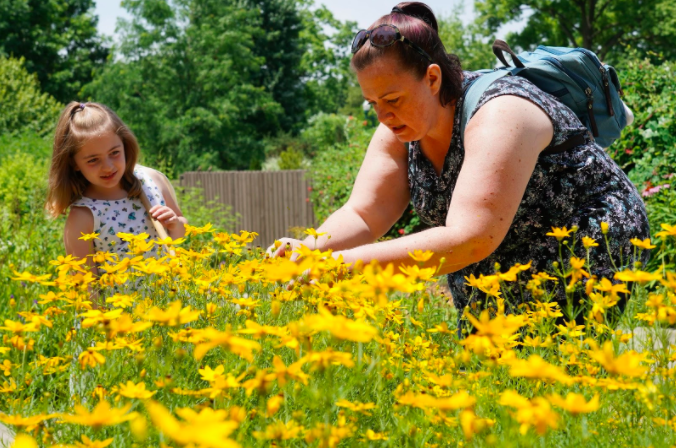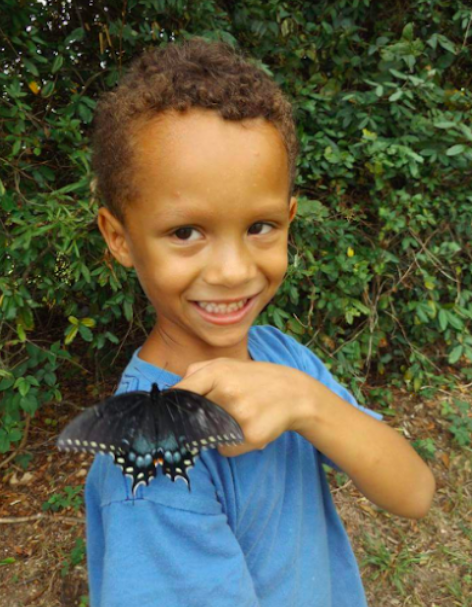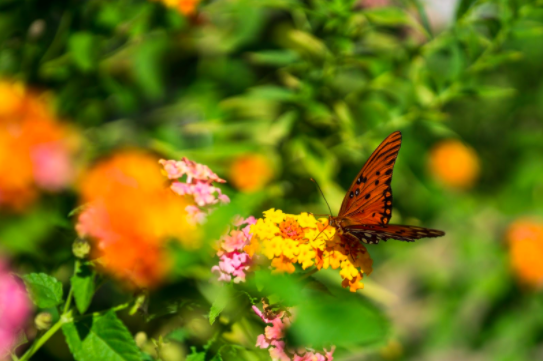GroMoreGood: ScottsMiracle-Gro's Promise to Protect Pollinators
A big part of how we GroMoreGood at ScottsMiracle-Gro is caring for our planet’s littlest creatures––bees, butterflies and other pollinators.
Pollinators are the gardener’s best friend and critically important to the health of our ecosystem. That’s why we take our role in protecting pollinators very seriously. Over the years, we’ve made changes to our product formulations, educated consumers on pollinator friendly practices and formed partnerships with important environmental organizations, such as National Recreation and Park Association and Pollinator Stewardship Council, as part of our Pollinator Promise commitment.
In celebration of Pollinator Month, we want to continue promoting the importance of pollinators and share tips on how anyone can support pollinators in their own backyard or local community.
Bee-ing responsible
Pollinators are in need of more habitat. By helping homeowners create pollinator-friendly spaces in their own backyards and educating them on how to use pest control products responsibly, we can help these essential creatures thrive. We continually evaluate the active ingredients in our products to make sure they work in concert, not in conflict, with the environment.
This led to a bold decision by our Ortho® brand in 2016. During this time, retailers were beginning to take a stand against selling a class of chemistry called Neonicotinoids or “Neonics”, an active ingredient some considered to negatively affect pollinators. Many state legislators considered banning its use. Ortho became the first––and only––national brand to remove Neonicotinoids from its outdoor garden control products. Ortho stopped producing products with Neonics in 2019, a full two years ahead of schedule.
But we didn’t stop there. Ortho went one step further to ensure gardeners protected pollinators while using our products. The Bee Responsible program, which rolled out in retail stores nationwide in 2019, gives consumers clear, concise tips to follow in using Ortho products responsibly. Signage on displays and bottles shares guidance, developed in collaboration with the Pollinator Stewardship Council, on how to apply products in a way that reduces impact on pollinators.
“When we first started working with ScottsMiracle-Gro, there were a lot of people on our board who were skeptical. There was a question of sincerity. But ScottsMiracle-Gro didn’t just do lip service and try to buy environmental groups. They recognized the problem and were willing to step up and take Neonics out of their product line. Now they’re working with us to educate homeowners on how to protect pollinators. That’s a real partnership.” –Steve Ellis, President and Board Member, Pollinator Stewardship Council
A GroMoreGood commitment from our Foundation
Protecting pollinators is also a core focus area of our Foundation. We dedicate grant funding and pollinator education resources to support pollinator gardens across North America. In 2019 alone, we supported the creation of nearly 130 pollinator gardens across the U.S. We also partner with the National Recreation and Park Association to support the Parks for Pollinators program, which expands pollinator habitats in local parks and connects people to resources to better understand pollinators and how to protect them. In 2019, this program expanded pollinator habitat by 152,460 square feet and reached nearly 49,000 people with pollinator messages. Our Foundation, like Ortho, also supports the Pollinator Stewardship Council in its critical mission to protect pollinators.
Your role in supporting pollinators
There are simple things we all can do to help protect pollinators. We can support pollinator populations in our own backyards by using pollinator friendly methods to care for plants and by providing food, water and shelter.
Pollinator-Friendly Methods
When controlling unwanted insect pests in your yard, follow our Ortho® Bee Responsible Tips:
- Always use products as directed
- Spray on foliage to avoid blooms
- Spray when air is calm to avoid drift
- Apply at dusk and dawn when bees are less active
- Do NOT spray when bees are visiting the treated area
Food
Grow more flowers! Nectar is pollinators’ primary food source. Think about providing a lot of different shapes, sizes and colors to attract a diversity of pollinator species. Plant them in large groups, so pollinators expend less energy while traveling from plant to plant while foraging. Try to include a variety of plants that bloom from early spring to late fall. Remember to include trees and shrubs in your plantings as well. Native plant species can be great to add to your landscaping as well. Many native pollinators have coevolved to depend on certain plant species, e.g. milkweed species and Monarch butterflies.
Water
A shallow dish filled with small rocks or sticks and water placed out of direct sunlight is a great option for small insect pollinators. It allows them to perch on the rocks and sip water without falling in and is too shallow for mosquitoes to lay eggs in. Maintain a fresh, clean supply of water.
Shelter
Many insect pollinators lay their eggs in the hollow stems of plants, so ornamental grass stems can be a good source of nest sites. Native species of solitary bees often prefer to nest in bare ground or old wood. So maybe leaving some unmulched bare ground underneath low growing shrubs or fallen tree limbs in out of the way areas could provide habitat for these species. You can also buy a “bee house”, that is typically used by Mason bee species to lay their eggs in.
Learn more about our GroMoreGood commitment to protect pollinators.





